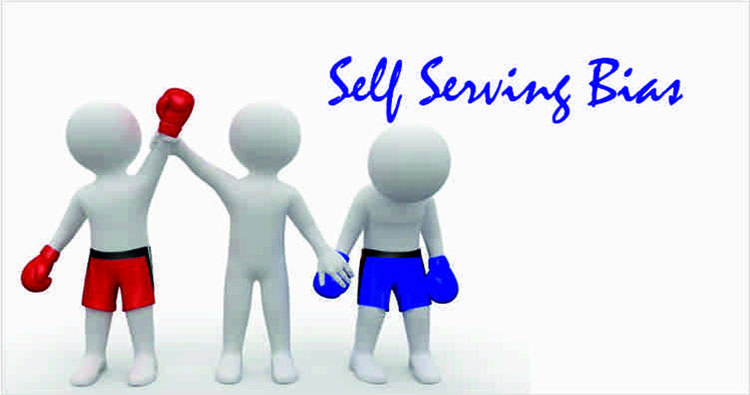

Understanding Self-Serving Bias & Why You Need To Take Responsibility
How many times have you boosted your talent when things went right and luck when things did not go as planned? Most of us have done this multiple times and we are likely to do it few more times as well. And this behaviour in the field of behavioural financeis called as self-serving bias.
Simply put, self-serving bias is the tendency to credit good outcomes to our skills and talents and unfavourable outcomes to fate and luck. Overconfidence and misattribution of causes are the two parts of self-serving bias.
Examples of self-serving bias can be found in our day-to-day life. For e.g., a job applicant after being rejected can attribute it to the personal preference of the interviewer. Also, he may attribute his selection in the next interview to his qualifications and skills.
In the investing world, we tend to attribute good performances of our investments to our investment skills and negative returns to the broader markets and factors outside our control.
Investors with self-serving bias will only pay attention to information that supports their viewpoints. They are also less willing to accept the financial advisor’s information. As a result, investors may take the wrong investment decisions.
They are also less likely to accept responsibilities for their wrong financial decisions. Hence, the probability of making the same mistakes goes up.
Self-serving bias also affects your investment decisions. It limits your ability to act in a rational way and learn from our mistakes. Hence, this bias can adversely impact your investment portfolio.
Reasons behind Self-Serving Bias
Just like there is a reason for the way we behave, self-serving bias is caused by two main factors:self-enhancement and self-presentation.
Self-enhancement lets us maintain a positive self-image and gives us the feel of being worthy. To continue with the image, investors credit themselves for the positive outcomes and external reasons for unfavourable outcomes. After all, everyone wants to be seen as a person that makes all the right decisions.
Self-Presentation is appearing in a particular way in front of other people. It helps to maintain the image that we have presented earlier.
Ways to Overcome Self Serving Bias
The first step to overcoming self-serving bias is acknowledging that the negative outcomes are not solely due to external factors. This will help you to understand the mistakes and learn from it as well.
Keeping a journal to track your investment and trading decisions will help you to overcome the bias. You can write the reason behind the transaction. Keeping a journal lets you find out your strengths and weakness. Investors can fix the weakness and keep their mistakes in check.
You need to treat both their profits and losses objectively. Analysing and recording these events can help you figure out the reasons and go back to it later.
It is always better to get unbiased and objective investment advice from an experienced financial advisor. So whenever you are in doubt, you can consult a financial advisor.
Conclusion:Self-serving bias is the result of overconfidence and not taking responsibility for the losses and wrong decisions. This bias helps investors to protect and enhance their self-image in front of others. Rational thinking and analysing the profits and losses, accepting responsibility for the wrong decisions and taking help of a financial advisor are some of the ways that can help investors to overcome self-serving bias.
BluRock Investments
208, Sriven Towers, 4th Cross,
Laxmi Layout, Munnekolala Marthahalli,
Bangalore 560037, India.
+91 9663447474